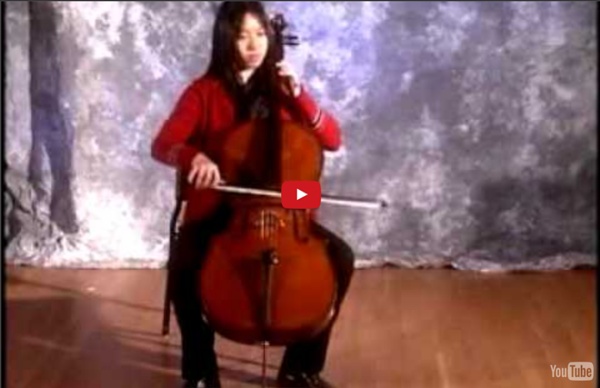



Strings, standing waves and harmonics The animation shows the interaction of two waves, with equal frequency and magnitude, travelling in opposite directions: blue to the right, green to the left. The red line is their sum: the red wave is what happens when the two travelling waves add together (superpose is the technical term). By stopping the animation, you can check that the red wave really is the sum of the two interacting travelling waves. The figure at right is the same diagram represented as a time sequence - time increases from top to bottom. You could think of it as representing a series of photographs of the waves, taken very quickly. The red wave is what we would actually see in a such photographs. Suppose that the right hand limit is an immoveable wall. At the fixed end they add to give no motion - zero displacement: after all it is this condition of immobility which causes the inverted reflection. This is shown in the animation and the figure.
Luthier built guitar Fun Video for Understanding Instrumental Families How Percussion Instruments Work - The Method Behind the Music Percussion instruments are the simplest, and most primitive musical instruments. The easiest definition of a percussion instrument is something that produces a sound through being struck. Percussion instruments are usually rythm or accent instruments, although instruments like bells, xylophone, or glockenspiel can play melodies. Making Sound Percussion instruments make sound by being hit. Playing Different Notes While different notes are not usually played on percussion instruments, drums are usually tuned to a specific note.
The most effective method to adjust the action on an Acoustic Guitar Acoustic guitar activity alludes to the tallness of the strings over the free board. It is additionally used to portray the general feel and play ability of a guitar. By and large a guitar’s string stature is measured at the twelfth fret. This inside estimation gives a decent perspective to tell how high the strings really are. Activity is likewise measured at the principal worry. Since we know what activity is, the reason is it imperative? Acoustic guitars require a higher activity than electric guitars to keep the strings from humming. Subsequent to perusing the greater part of this, you are presumably considering how high your activity ought to be. Like this: Like Loading...
Minimalism How Do Woodwind Instruments Work? Something about sound The harmonic series The sound waves going up and down the instrument add up to give a standing wave, a vibration pattern of the air in the instrument. Several different such patterns are possible. Eight harmonics of the lowest note on a flute. Harmonics and the different instrument bores Why can the air in the flute vibrate in these different ways? These graphs show the wave patterns in the three simplest air columns: open cylinder, closed cylinder and cone. There is a more detailed discussion of standing waves in pipes in the introduction to flute acoustics, introduction to clarinet acoustics and introduction to saxophone acoustics, which also have a discussion of the use of register holes to produce harmonics. Flutes vs reed Instruments Reed instruments are different: the end in the player's mouth is not open to the outside air, so the air is not maximally free to move in and out. The bores of woodwind instruments. Conical bores: oboes, bassoons and saxophones Flutes
Descant How Stringed Instruments Work - The Method Behind the Music Some of the simpler instruments are the string instruments. String instruments make sound with vibrating strings, and the pitch is modified by the thickness, tension, and length of the string. String instruments can be played in many ways, and come in many variations. String instruments range from the simple lyre, to the modern guitar, violin, and piano. All rely on the sound of strings. Making Sound All string instruments make sounds with tensioned strings. Playing Different Notes Different notes are produced in different ways by string instruments. Sounds of the Renaissance Rhythm Reading Exercises 12-8 Basic Rhythm Practice 12-8 Basic-Intermediate Rhythm Practice 12-8 Intermediate Rhythm Practice 12-8 Intermediate-Advanced Rhythm Practice 12-8 Advanced Rhythm Practice More rhythm exercises are available on the Percussion Exercises page. If you find these rhythm reading exercises useful, please consider making a donation to cover the costs of running this site ($5-10 suggested, any amount appreciated). Contact info:Samuel Stokes ● Samuelstokes@yahoo.com